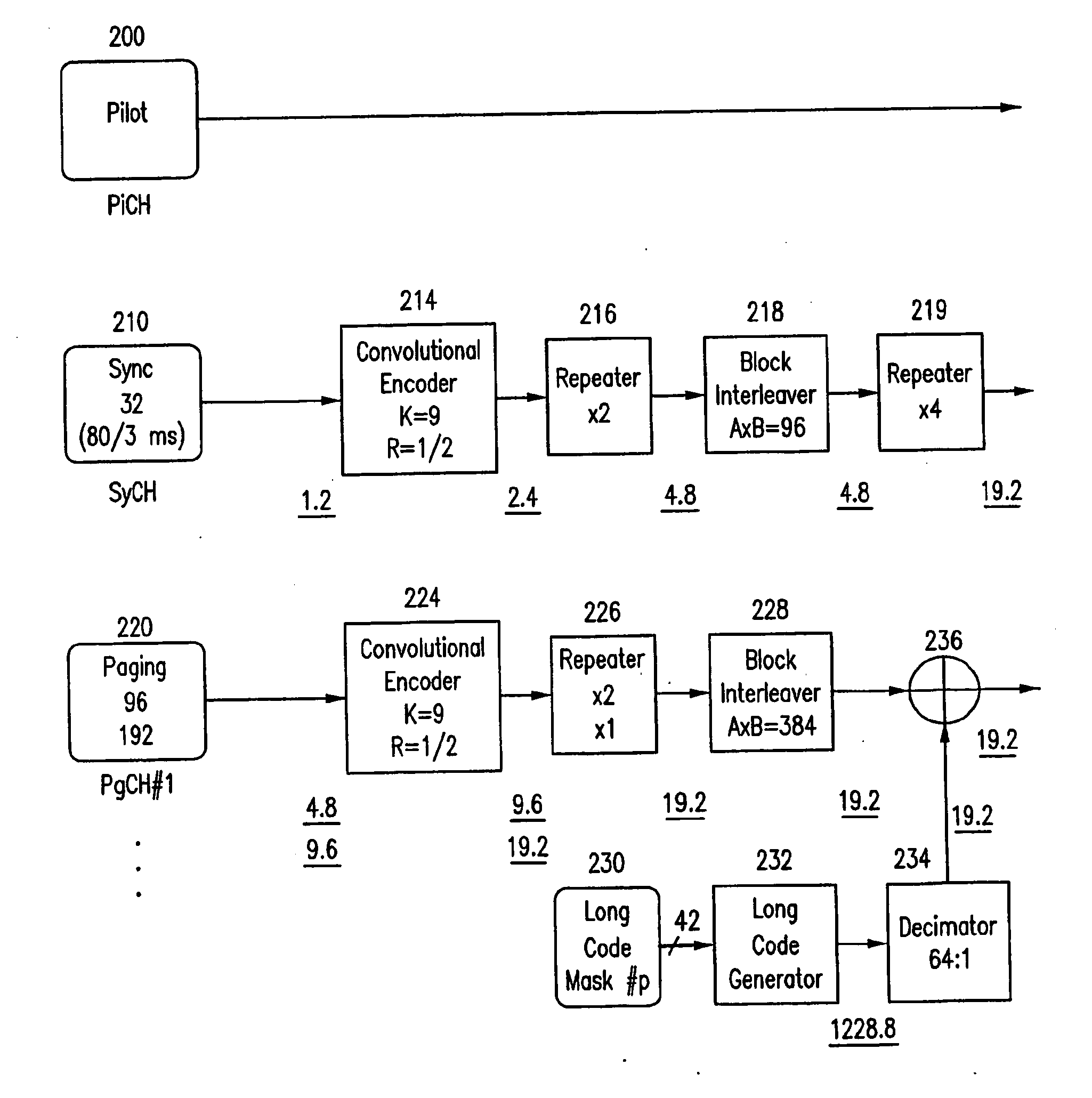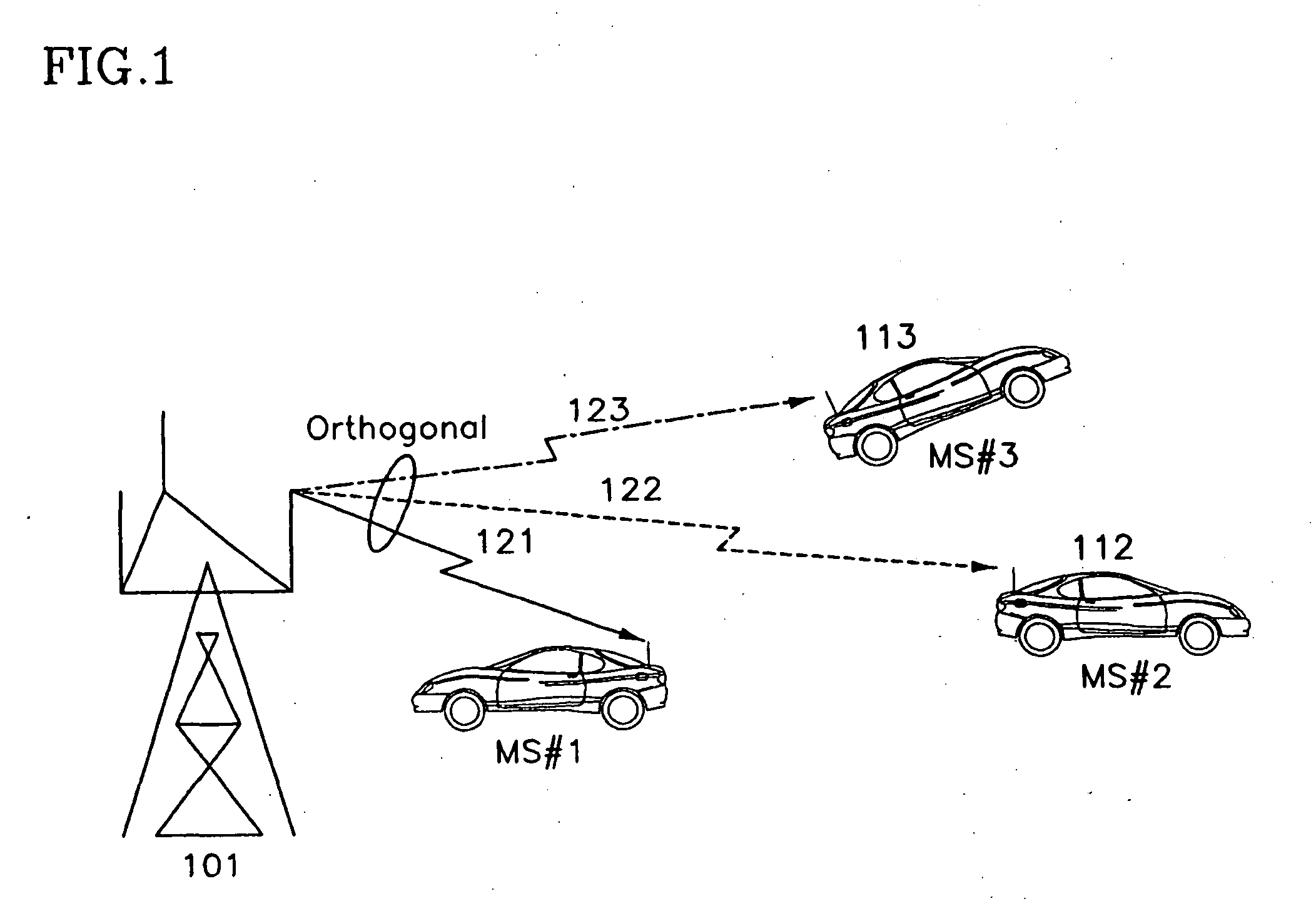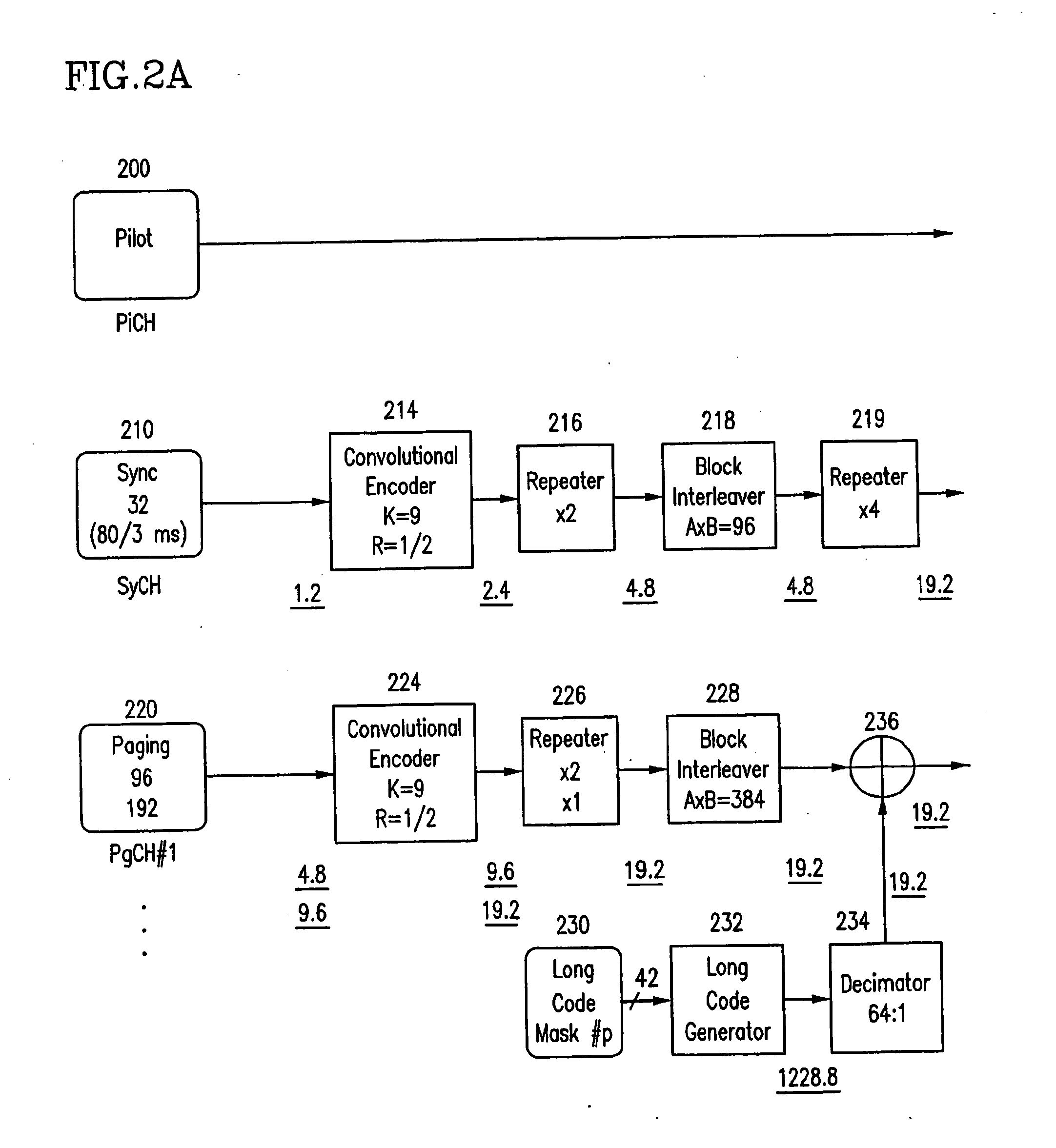Digital communication method and system
a communication method and digital communication technology, applied in multiplex communication, orthogonal multiplex, phase-modulated carrier systems, etc., can solve the problems of low transmission data activity, low resource efficiency, and low efficiency of frequency hopping multiplexing. , to achieve the effect of low transmit data activity and low traffi
- Summary
- Abstract
- Description
- Claims
- Application Information
AI Technical Summary
Benefits of technology
Problems solved by technology
Method used
Image
Examples
Embodiment Construction
[0206] In the following detailed description, only the preferred embodiment of the invention has been shown and described, simply by way of illustration of the best mode contemplated by the inventor(s) of carrying out the invention. As will be realized, the invention is capable of modification in various obvious respects, all without departing from the invention. Accordingly, the drawings and description are to be regarded as illustrative in nature, and not restrictive.
[0207] Although the embodiment of the present invention has been described specifically in regard to a wireless mobile communication system, statistical multiplexing proposed in the present invention is applicable to wire communication systems as well as wireless communication systems.
[0208] In the description of the embodiment of the present invention, the same reference numbers are assigned to the same parts as in the example of the prior art. The corresponding parts have been described previously, so that the emb...
PUM
 Login to View More
Login to View More Abstract
Description
Claims
Application Information
 Login to View More
Login to View More - R&D
- Intellectual Property
- Life Sciences
- Materials
- Tech Scout
- Unparalleled Data Quality
- Higher Quality Content
- 60% Fewer Hallucinations
Browse by: Latest US Patents, China's latest patents, Technical Efficacy Thesaurus, Application Domain, Technology Topic, Popular Technical Reports.
© 2025 PatSnap. All rights reserved.Legal|Privacy policy|Modern Slavery Act Transparency Statement|Sitemap|About US| Contact US: help@patsnap.com



